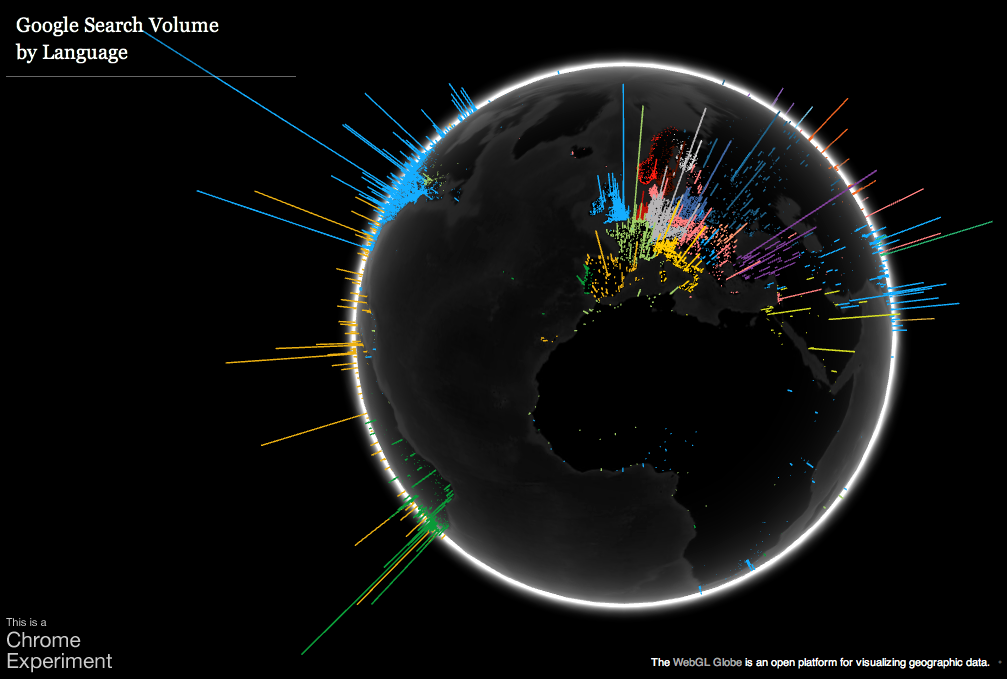Google introduced the open platform WebGL Globe

Today, as part of its Chrome Experiments project, Google has introduced an open platform for visualizing geographic data The WebGL Globe in the browser. The name of the project speaks for itself - the WebGL technology is used - so far only owners of Google Chrome and Firefox 4 browsers can evaluate the examples presented by the authors. Now there are two “globes” available on the site, one of which shows the population of the globe at different times, and the second shows the dynamics of Google search queries. Both examples, of course, support the manipulation of the "globes", and the developers' sense of humor can be assessed by hovering the cursor over the "Get Code" button.
It is worth reminding that this is not the first Google experiment with WebGL. Some time ago, Google's Body Browser is available to those who want it - a project that represents the visualization of anatomical human atlas in a browser.
UPD: If you are unable to view the WebGL scene in Chrome (WinXP), start it with the --ignore-gpu-blacklist key, including the GPU Accelerated Compositing and GPU Accelerated Canvas 2D options in the about: flags settings.
')
Source: https://habr.com/ru/post/118885/
All Articles